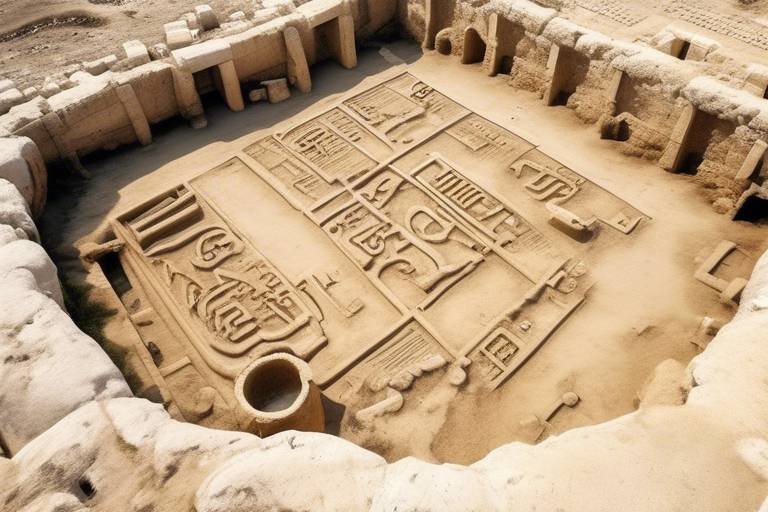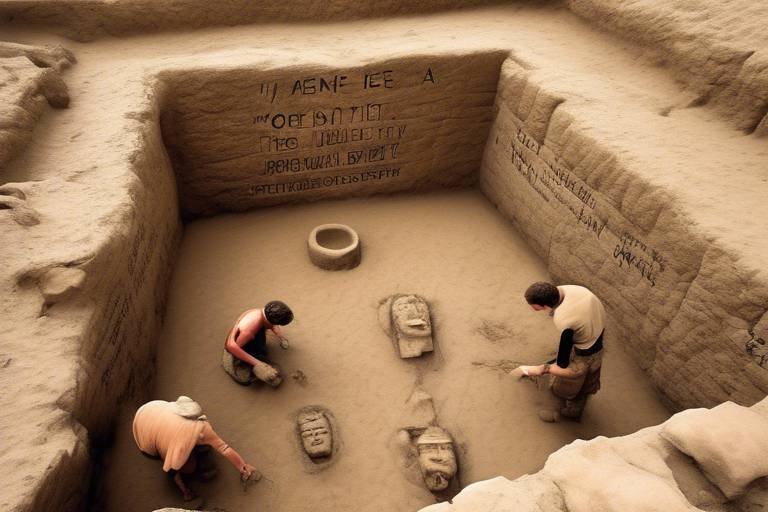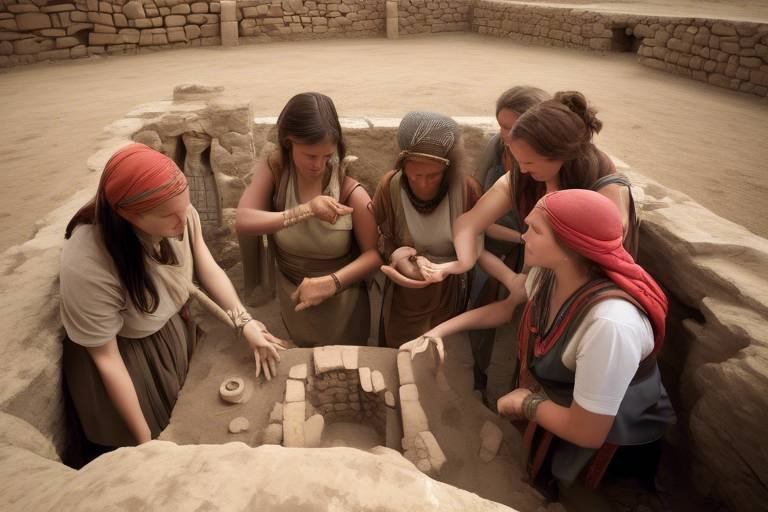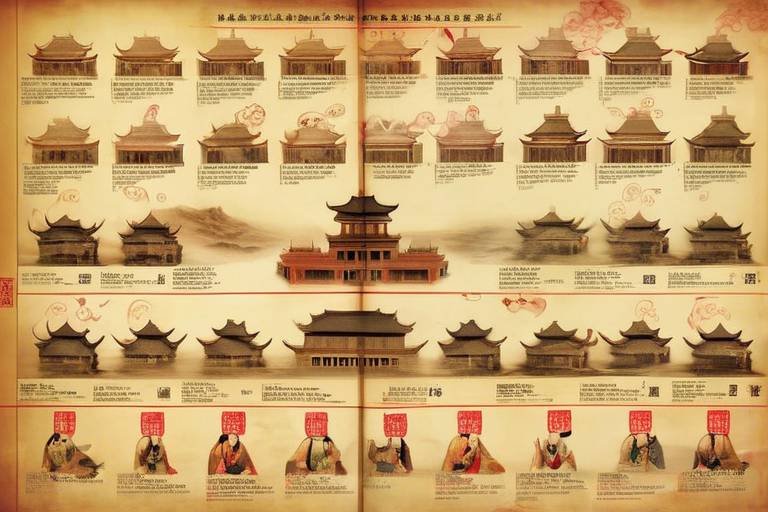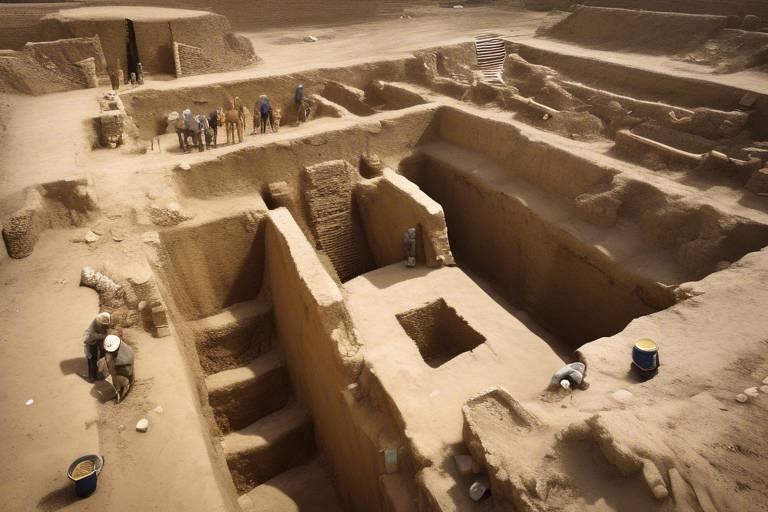The Nazca Lines - Ancient Geoglyphs in Peru
Exploring the mysterious Nazca Lines in Peru, a UNESCO World Heritage Site that features ancient geoglyphs etched into the desert floor, believed to have been created by the Nazca people between 500 BC and 500 AD.

History of the Nazca Lines
The history of the Nazca Lines is shrouded in mystery and intrigue, captivating the imagination of archaeologists and historians alike. These ancient geoglyphs, etched into the desert floor of southern Peru, date back to the time of the Nazca civilization, flourishing between 500 BC and 500 AD. The purpose behind the creation of these massive figures and intricate designs remains a subject of debate and speculation, with various theories attempting to unravel the enigma that surrounds them.
One prevailing theory suggests that the Nazca Lines served as ritual pathways or ceremonial sites, possibly linked to astronomical observations or agricultural practices. The meticulous planning and execution required to create such large-scale geoglyphs raise questions about the technological capabilities and cultural beliefs of the Nazca people. The sheer scale and precision of these designs hint at a sophisticated society with a deep connection to the land and the celestial world.
Archaeologists have uncovered evidence of ancient Nazca settlements near the geoglyphs, indicating a close relationship between the people and the landscape they inhabited. The cultural significance of the Nazca Lines is further underscored by the inclusion of geometric shapes, animals, and plants in the designs, reflecting the rich tapestry of symbols and beliefs that defined Nazca society.

Geometric Shapes and Figures
Exploring the mysterious Nazca Lines in Peru, a UNESCO World Heritage Site that features ancient geoglyphs etched into the desert floor, believed to have been created by the Nazca people between 500 BC and 500 AD.
Delve into the historical background of the Nazca Lines, including theories on their purpose, the methods of creation, and the cultural significance they hold for the Nazca civilization.
When it comes to the Nazca Lines, one cannot overlook the intricate geometric shapes and figures that adorn the desert landscape. These formations go beyond mere lines; they depict animals, plants, and abstract designs that have puzzled archaeologists and historians for centuries.
Among the myriad of figures etched into the Nazca desert, the Spider geoglyph stands out as one of the most enigmatic. Its eight legs sprawl across the earth, inviting speculation on its symbolism and significance in the ancient Nazca culture.
Another captivating figure among the Nazca Lines is the Hummingbird geoglyph, a graceful representation of this agile bird in flight. The precision and artistry of this design spark curiosity about the cultural values it may have embodied for the Nazca people.
Stay updated on the latest discoveries and ongoing research efforts related to the Nazca Lines, including technological advancements aiding in the study and preservation of these ancient geoglyphs.
Viewing the Nazca Lines from the air offers a unique perspective that unveils the grandeur and complexity of these ancient artworks. Aerial perspectives provide a bird's eye view that allows for a deeper appreciation of the scale and intricacy of the Nazca geoglyphs.
Explore the challenges faced in preserving the Nazca Lines from natural erosion, human encroachment, and environmental threats. Discover the conservation initiatives that are dedicated to safeguarding this archaeological wonder for future generations.
Learn about the visitor experience at the Nazca Lines, from guided tours that offer insights into the history and significance of the geoglyphs to viewing platforms that provide optimal vantage points. Find out how the delicate balance between promoting tourism and protecting the fragile heritage site is maintained.

The Spider
The Spider geoglyph is one of the most intriguing and iconic figures among the vast collection of Nazca Lines in Peru. Depicting a massive spider with long, sprawling legs, this geoglyph has puzzled researchers and visitors alike with its intricate design and mysterious symbolism. The Spider is believed to have been created by the ancient Nazca people between 500 BC and 500 AD, using simple tools and precise measurements to etch the figure into the desert floor.
Archaeologists and historians have put forward various theories regarding the significance of the Spider geoglyph. Some believe that it may have represented a deity or a supernatural being in the Nazca culture, possibly associated with fertility, agriculture, or religious beliefs. Others suggest that the Spider could have served as a giant calendar or marker for astronomical events, aligning with the Nazca civilization's advanced knowledge of celestial bodies.
One of the most fascinating aspects of the Spider geoglyph is its sheer size and complexity when viewed from the ground. Spanning over 150 feet in length, the Spider's intricate design becomes fully apparent when observed from an aerial perspective. The precision and scale of the figure hint at the advanced planning and engineering skills possessed by the Nazca people, raising questions about the purpose and intended audience of these massive desert drawings.
Visitors to the Nazca Lines often marvel at the Spider geoglyph, contemplating its enigmatic presence in the arid landscape. The symbolism behind the Spider continues to spark debate and speculation among scholars, adding to the allure and mystique of these ancient geoglyphs. As researchers continue to study and unravel the secrets of the Nazca Lines, the Spider remains a captivating symbol of the ingenuity and creativity of the ancient Nazca civilization.

The Hummingbird
The Hummingbird geoglyph is a captivating depiction of a hummingbird in flight etched into the desert floor of Nazca, Peru. This intricate figure showcases the artistic skill and attention to detail of the ancient Nazca people, leaving researchers and visitors alike in awe of its beauty and precision. The Hummingbird geoglyph is believed to symbolize fertility, vitality, and the connection between the Nazca civilization and the natural world.

Recent Discoveries and Research
Recent discoveries and ongoing research efforts surrounding the Nazca Lines continue to captivate archaeologists and historians alike. One of the most intriguing findings in recent years is the use of drone technology to create detailed 3D models of the geoglyphs, allowing for a more comprehensive analysis of their intricate designs and patterns. These technological advancements have shed new light on the purpose and significance of the Nazca Lines, offering fresh perspectives on how these ancient markings were created with such precision and scale.
Furthermore, ongoing excavations near the Nazca Lines have unearthed new artifacts and evidence that provide clues to the daily lives and beliefs of the Nazca people. Archaeologists have discovered pottery, textiles, and ceremonial items that offer insights into the cultural practices and religious rituals of this ancient civilization. By piecing together these archaeological finds, researchers are gradually unraveling the mysteries surrounding the Nazca Lines and the civilization that created them.

Aerial Perspectives
When it comes to exploring the Nazca Lines, one of the most captivating and awe-inspiring experiences is gaining an aerial perspective of these ancient geoglyphs. Viewing the Nazca Lines from above unveils a whole new dimension of their grandeur and intricacy, allowing visitors to appreciate the sheer scale and precision of these mysterious desert drawings. The perspective from the air offers a unique vantage point that showcases the geometric shapes, animal figures, and intricate patterns in a way that is simply not possible from the ground.

Preservation Challenges and Conservation Efforts
Preserving the ancient Nazca Lines poses significant challenges due to natural erosion, human activities, and environmental factors threatening the delicate geoglyphs etched into the desert floor. The arid climate of the Nazca region, coupled with occasional heavy rainfall, contributes to the erosion of the lines over time, requiring constant monitoring and conservation efforts to prevent their deterioration.
Human encroachment, such as illegal land invasions and construction projects near the Nazca Lines, also poses a threat to their preservation. Unauthorized access to the site can lead to irreparable damage, making it crucial to enforce strict regulations and boundaries to protect these fragile archaeological treasures.
Environmental threats, including climate change and pollution, further endanger the Nazca Lines and their surrounding ecosystem. Rising temperatures, shifting weather patterns, and pollution from nearby industries all impact the stability of the geoglyphs, necessitating sustainable conservation strategies to mitigate these risks.
Conservation efforts focused on safeguarding the Nazca Lines involve a combination of monitoring, research, and community engagement. Conservationists work tirelessly to assess the condition of the geoglyphs, implement protective measures, and raise awareness about the importance of preserving this cultural heritage for future generations.
Technological advancements play a crucial role in conservation initiatives, offering innovative solutions for monitoring and maintaining the Nazca Lines. Remote sensing techniques, drone surveys, and 3D modeling help experts analyze the geoglyphs in detail, guiding conservation efforts and ensuring the long-term preservation of these ancient wonders.

Visitor Experience and Tourism
When visiting the Nazca Lines, tourists are greeted with a sense of awe and wonder as they stand before these ancient geoglyphs etched into the desert floor. Guided tours offer visitors the opportunity to learn about the history and significance of the Nazca Lines from knowledgeable experts who provide insights into the mysteries surrounding these intricate formations.
For those seeking a unique perspective, flights over the Nazca Lines provide a breathtaking aerial view, allowing visitors to appreciate the vast scale and complexity of the geoglyphs from above. The experience of witnessing these enigmatic drawings from the air offers a newfound appreciation for the skill and precision of the ancient Nazca people.
Viewing platforms strategically placed near some of the most prominent figures, such as the Hummingbird and the Spider, offer visitors a closer look at the details of these impressive geoglyphs. These platforms serve as vantage points for capturing the beauty and intricacy of the designs, allowing for a deeper connection to the cultural heritage preserved in the Nazca Lines.
While tourism plays a vital role in raising awareness and appreciation for the Nazca Lines, efforts are also underway to protect this fragile archaeological site from the impact of increasing visitor numbers. Conservation initiatives aim to balance the promotion of tourism with the preservation of the geoglyphs, ensuring that future generations can continue to marvel at these ancient wonders.
Frequently Asked Questions
- What are the Nazca Lines?
The Nazca Lines are ancient geoglyphs etched into the desert floor in Peru. They are believed to have been created by the Nazca people between 500 BC and 500 AD.
- What is the significance of the Nazca Lines?
The purpose of the Nazca Lines remains a mystery, with theories ranging from astronomical calendars to religious rituals. They are culturally significant to the Nazca civilization.
- How were the Nazca Lines created?
The Nazca Lines were made by removing the reddish-brown iron oxide-coated pebbles that cover the surface of the Nazca desert, revealing the lighter-colored earth beneath.
- What shapes and figures can be seen in the Nazca Lines?
The Nazca Lines feature various geometric shapes and figures, including animals like the Spider and the Hummingbird, plants, and abstract designs.
- Why are the Nazca Lines best viewed from the air?
Aerial perspectives provide a unique vantage point to appreciate the vast scale and intricate details of the Nazca Lines, which are difficult to discern from ground level.
- What are the challenges in preserving the Nazca Lines?
Preservation efforts face challenges from natural erosion, human encroachment, and environmental threats. Conservation initiatives are in place to protect this archaeological wonder.
- What is the visitor experience like at the Nazca Lines?
Visitors can explore the Nazca Lines through guided tours, viewing platforms, and educational experiences that aim to balance tourism promotion with the protection of the site's fragile heritage.


